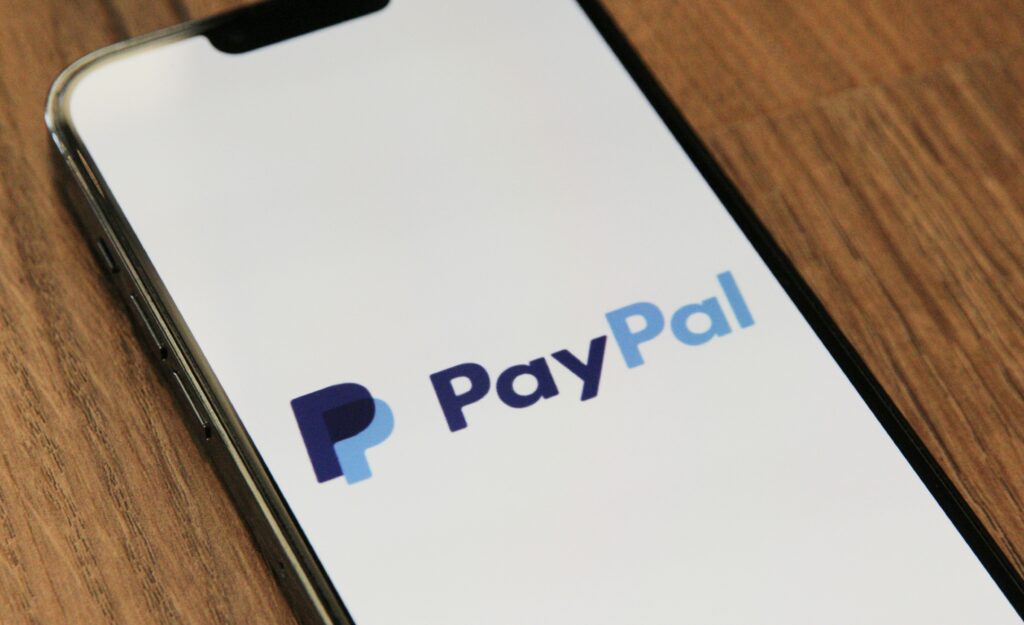In today’s digital age, where consumers are constantly bombarded with ads, standing out is no longer just about having the flashiest graphics or the catchiest jingle. It’s about making a genuine emotional connection.
This is where the magic of emotional appeal advertising steps in. This powerful tool has the capability not only to grab your audience’s attention but also to resonate with them on a deeply personal level.
When used effectively, it nudges them towards making a purchase, subscribing to a service, or simply believing in a brand’s message. For online coaches, mastering this art could be the key to elevating your brand loyalty, enhancing conversions, and truly connecting with your audience.
1. The Essence of Emotional Appeal Advertising
At its core, emotional appeal advertising is about tapping into the feelings and aspirations of the target audience. It transcends the boundaries of conventional marketing strategies, which primarily revolves around the features and benefits of a product or service. Instead, it delves deeper, seeking to stir the emotions, ignite passions, or even evoke memories.
Now, you might wonder, why all this emphasis on emotions? Here’s the catch: Humans are inherently emotional beings. Every day, we make countless decisions based on how we feel, sometimes even subconsciously. From the clothes we wear to the brands we champion, our choices often echo our emotions. And this is precisely why emotional advertising is such a game-changer.
Furthermore, emotional appeal is not a one-size-fits-all. Different emotions drive different results. While some brands might leverage the joy of togetherness, others might focus on the fear of missing out or the desire for self-improvement. The key is understanding your audience’s desires, fears, and aspirations and then aligning your message to resonate with those emotions.
2. Cutting Out the Boring Verbs
Verbs are the backbone of any sentence. They breathe life into your words, propelling the narrative forward and guiding the reader’s journey. But, in the context of emotional appeal advertising, not all verbs are created equal. The right verb can inject vigor into your copy, while the wrong one can make it fall flat.
Consider the difference between ‘going’ and ‘soaring.’ Both signify movement, but one merely gets you from point A to point B, while the other paints a picture of triumphant elevation. The verb choice determines the emotional undertone and intensity of your message.
Here are some insights into making your verbs work for you in emotional ads:
- Avoid Passive Verbs: Passive verbs often dampen the impact of a sentence. For instance, “Our resources are being read by many” is far less impactful than “Countless professionals devour our resources daily.” The latter is not only more active but also emotionally charged.
- Seek Stronger Alternatives: Basic verbs can often be replaced with more potent alternatives. Instead of “helping,” why not “empower”? Instead of “show,” how about “reveal”? Small tweaks can lead to a more dynamic and compelling message.
- Evoke Action and Urgency: Especially for online coaches, your audience seeks transformation. Use verbs that instigate immediate action. Encourage them to “dive,” “leap,” or “embark” rather than just “start” or “try.”
- Infuse Emotion: Choose verbs that naturally carry an emotional undertone. Words like “struggle,” “thrive,” “conquer,” and “cherish” don’t just convey actions, they also evoke feelings.
- Test and Refine: Remember, it’s not always about using the most complex or sophisticated verb. Sometimes, simplicity can be impactful. The key is to be attuned to your audience’s response and adjust accordingly.
3. Inserting Emotions and Outcomes – Make it Resonate
While verbs might be the rhythm, emotions and outcomes are undeniably the melody. Together, they strike chords, resonate with audiences, and make marketing campaigns memorable. Let’s dive into how you can seamlessly blend these elements into your advertising copy.
The Emotional Connect
- Understand Your Audience: Before you can touch their hearts, you must understand what makes them tick. Are they seeking validation, empowerment, community, or transformation? This understanding paves the way for genuine emotional connection.
- Variety is the Spice: Not every emotion suits every campaign. While joy and inspiration might work wonders for some ads, others might benefit from a touch of nostalgia or the thrill of adventure. Experiment with different emotional appeals to see which resonates best with your offerings and target audience.
- Authenticity Matters: In a digital age rife with hollow claims, authenticity is gold. Don’t just use emotions as a marketing tactic; genuinely embed them in your brand’s ethos. If you’re advocating for empowerment, ensure that your coaching services genuinely offer tools and resources that empower.
The Power of Outcomes
- Show, Don’t Just Tell: It’s not enough to tell your audience that they’ll benefit from your service. Paint a vivid picture. If you’re an online coach specializing in career growth, don’t just say they’ll advance. Show them a vision where they’re leading, thriving, and making waves in their industry.
- Tangible vs. Intangible Outcomes: While tangible outcomes like ‘double your income’ are compelling, don’t underestimate the power of intangible rewards. Emotional satisfaction, personal growth, and newfound confidence can be equally—if not more—alluring.
- Evoke a Before-and-After Scenario: One of the most potent tools in advertising is to showcase transformation. Highlight the ‘before’ state of your potential client—filled with challenges, uncertainties, and unmet potentials. Then, contrast it with the ‘after,’ where they’re flourishing post your coaching—full of confidence, clarity, and success.
Resonate with your customers (and their wallets) with the right payment gateway.
4. Mnemonics: The Memory-Boosting Magic
In a world awash with information, how do you ensure your message doesn’t just catch the eye but also sticks in the mind? Enter mnemonics—a memory aid that transforms complex concepts into catchy, easily recallable cues.
The Science Behind Mnemonics
- Memory Anchors: Our brains are wired to seek patterns and connections. Mnemonics work by creating a bridge between unfamiliar information and something familiar, acting as an anchor in our memory.
- Emotionally Charged Memory: Emotions play a pivotal role in determining what we remember. When a mnemonic evokes an emotion, it’s more likely to be committed to long-term memory.
Mnemonics in Advertising
- Slogans and Jingles: Think of some of the most iconic ad campaigns. Whether it’s McDonald’s “I’m Lovin’ It” or Nike’s “Just Do It,” these mnemonically designed slogans stick because they’re short, catchy, and resonate emotionally.
- Visual Mnemonics: Imagery can be a powerful mnemonic device. A unique logo or a consistent color theme can make your brand instantly recognizable, aiding brand recall. For online coaches, this could be a signature visual style or a unique representation of your coaching journey.
- Story-based Mnemonics: Narratives are innately memorable. Craft your advertising message as a story—a journey of transformation, a challenge overcome, or a dream realized. This not only captivates your audience but also embeds your message more deeply in their memory.
Crafting Your Own Mnemonic Magic
- Simplicity is Key: The best mnemonics are often the simplest. Overcomplicating can defeat the purpose. Aim for clarity and catchiness.
- Relevance Matters: Ensure that your mnemonic device, whether it’s a slogan, image, or story, is relevant to your brand and the message you’re conveying.
- Consistency Across Channels: Use your mnemonics consistently across all digital marketing channels, be it social media, email marketing, or your website. Repetition reinforces memory.
5. Turning Bland Statements into Emotional Appeals
One of the hallmarks of effective emotional appeal advertising is its ability to transform even the most mundane messages into compelling calls to action. It’s about infusing emotion, promise, and vision into every line of your copy. Let’s explore how online coaches can revamp bland statements to resonate deeply with their target audience.
The Key Ingredients
- Emotion: Identify the primary emotion you want to evoke—be it empowerment, aspiration, motivation, or any other. This serves as the foundation for your message.
- Desired Outcome: What transformation are you promising? Whether it’s personal growth, increased expertise, or networking opportunities, highlight the value clearly.
- Action-Oriented Verbs: As discussed earlier, verbs drive the narrative. Opt for dynamic, impactful verbs that encourage immediate action.
From Bland to Brilliant
- ❌ “Check our online sessions” ✅ “Dive into a treasure trove of transformative insights with our online sessions.”
- ❌ “We offer coaching” ✅ “Unlock the doors to your true potential with our expert coaching.”
- ❌ “Join our email list” ✅ “Embark on a journey of growth and knowledge—subscribe to our enlightening newsletters.”
- ❌ “See our resources” ✅ “Unearth the secrets of success with our curated resources.”
Customizing for Your Audience
- Know Their Pain Points: Understand the challenges and aspirations of your audience. Tailor your emotional appeals to address these specifically.
- Be Genuine: It’s easy to spot inauthenticity. Ensure that the promises you make in your emotional appeals align with what you truly offer.
- A/B Test: Experiment with different emotional appeals and measure which ones resonate the most with your audience. Refine based on feedback.
Nailed the copy, but can’t get the conversions? Your checkout might be to blame!
6. Emotional Marketing on Social Media
The rise of social media platforms has brought about a seismic shift in the advertising world. These platforms, brimming with user-generated content, personal stories, and real-time engagements, provide a fertile ground for emotional appeal ads. But how do online coaches navigate this dynamic landscape to create resonating and impactful campaigns?
The Social Media Advantage
- Real-Time Feedback: Unlike traditional advertising channels, social media offers instant feedback. Likes, shares, comments, and direct messages provide invaluable insights into the emotional response of your target audience.
- Engaging Formats: Stories, reels, live sessions, interactive polls, and Q&A features provide diverse ways to engage, inform, and create emotional connections.
- Building Communities: Platforms like Facebook and LinkedIn offer group features, allowing online coaches to cultivate communities where shared goals, transformations, and stories amplify emotional bonds.
Crafting Emotional Content for Social Media
- Visual Storytelling: A captivating image or a short video can evoke powerful emotions. Use visuals that align with your brand’s emotional message—be it aspirational landscapes, success stories, or behind-the-scenes glimpses.
- Interactive Content: Engage your audience with quizzes, challenges, and interactive polls. For instance, a “Before and After Coaching” challenge can showcase tangible transformations and stir aspirations.
- User Testimonials: Authentic experiences shared by past clients can resonate deeply. It’s the power of seeing someone like oneself achieving desired outcomes.
Brand Giants Leading the Way
- Coca-Cola: Coke’s campaigns often revolve around happiness, friendship, and shared moments, striking chords globally.
- Nike: With messages of perseverance, determination, and triumph, Nike’s social media campaigns inspire millions.
- Dove: Dove’s campaigns champion self-esteem, natural beauty, and inclusivity, evoking strong emotions and conversations.
Embracing Authenticity
On social media, where filters and curated realities are rampant, genuine emotional connections stem from authenticity. As an online coach, sharing real challenges, genuine success stories, and personal anecdotes can foster trust and emotional resonance.
8. Types of Emotional Appeals: From Fear to Triumph
Emotions are complex and multifaceted. Effective emotional advertising doesn’t just tap into one kind of emotion but navigates the vast spectrum of human feelings. Let’s explore the various types of emotional appeals and how they can be harnessed effectively in advertising campaigns.
Fear Appeal
- How It Works: Fear appeal capitalizes on an audience’s fears and anxieties—on negative emotions, presenting a product or service as a solution or safeguard.
- Example: Insurance companies often depict unforeseen calamities, emphasizing the importance of being prepared.
- Caveat: Overplaying fear can backfire. The objective should be to empower and not overwhelm the audience.
Joy and Happiness
- How It Works: This appeal focuses on the joy, satisfaction, or happiness a product or service can bring.
- Example: Travel agencies showcase idyllic vacation spots, emphasizing relaxation and rejuvenation.
- Application for Coaches: Showcase the happiness and satisfaction achieved by clients after undergoing a transformative coaching experience.
Aspirational Appeal
- How It Works: This appeal taps into the audience’s dreams, goals, and aspirations, positioning the product or service as a stepping stone to that desired reality.
- Example: Luxury brands often depict an elite lifestyle that many aspire to achieve.
- Application for Coaches: Highlight the success stories of past clients who’ve achieved their dreams and goals through coaching.
Nostalgia Appeal
- How It Works: Nostalgia appeal draws upon memories, evoking a sense of longing for the past.
- Example: Retro-themed ads or products that remind people of their childhood or “good old days”.
- Application for Coaches: Use narratives that take clients back to a time when they felt invincible or free, then bridge that to how coaching can help recapture those feelings.
Social and Belonging Appeal
- How It Works: Humans have an innate desire to belong. This appeal capitalizes on that, presenting the product or service as a means to be a part of a community or group.
- Example: Many brands showcase their products as popular choices among peers or emphasize a community of users.
- Application for Coaches: Highlight the community aspect of coaching groups or the shared journey of similar-minded individuals seeking growth.
Triumph and Achievement
- How It Works: This appeal centers on the exhilaration of overcoming obstacles and achieving success.
- Example: Sports brands often depict athletes pushing limits and emerging victorious.
- Application for Coaches: Narrate stories of clients who’ve faced challenges head-on and, with the help of coaching, emerged stronger and triumphant.
Conclusion: The Emotional Compass in Advertising and Your Next Steps
For online coaches, especially, the ability to articulate the transformation, the promise, and the emotional payoff of their offerings is invaluable. But just as crucial as the emotional appeal is the infrastructure to support your growing clientele.
While emotional advertising helps bring potential clients to your doorstep, it’s the practical steps you take that ensure smooth sailing. And one such pivotal step is having a reliable payment gateway. If you’re an online coach, especially one dealing with high volumes or international clients, you may face challenges typical payment platforms might not cater to.
That’s where DirectPayNet comes in. We specialize in high-risk merchant accounts tailored for professionals like online coaches. With our support, you can focus on what you do best—transforming lives—while we handle the intricacies of seamless and secure payment solutions.







